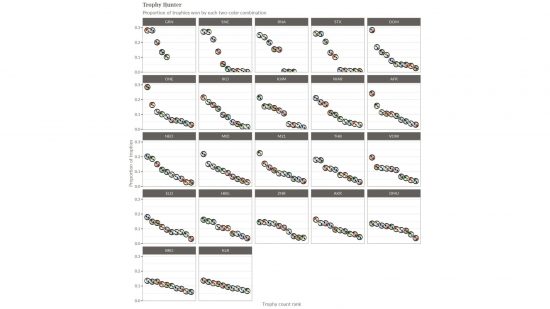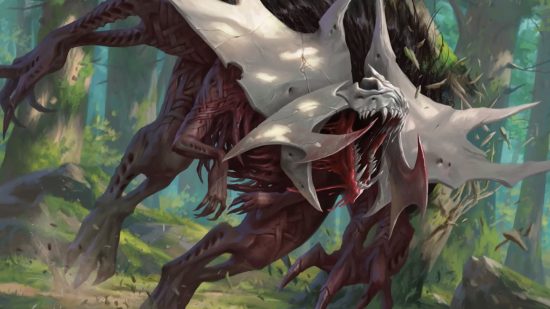Magic: The Gathering’s recent set Phyrexia: All Will Be One is one of the most unbalanced MTG draft sets in recent memory, according to work done by MTG Data Science.
These are the best Phyrexia MTG cards to look out for in Limited – at least in a vacuum. But according to the data, you should be heavily prioritising one colour pair above all others for your All Will Be One MTG drafts: red-green.
MTG Arena data, recorded by the tracking tool 17 Lands, shows this colour pair completely dominates right now, with roughly 30% of players who achieve the coveted seven wins in a draft (sometimes known as trophying) doing it in this colour pair. In an ideal world, each of the ten colour pairs would always be perfectly evenly matched, scoring 10%.
The analysis comes from Magic Data Science, a math magician who analyses the data available on Magic: The Gathering. They pull out interesting insights and create tools – like this one, which tells you how hipster your Commander deck is.
Magic Data Science has sorted each set by the colour concentration of its seven-win-scoring decks, to show how balanced each one is. With one colour pair very dominant, and several MTG colour combinations (red-black, and blue-green in particular) lagging behind, Phyrexia All Will Be One is faring extremely poorly. It’s narrowly topped by Dominaria, where red/blue Wizard decks ruled the roost, and Streets of New Capenna, where the Brokers guild was extraordinarily broken.
After that, the only less-balanced formats on record are guild sets like Guilds of Ravnica and Strixhaven, which don’t get a fair shake, as these formats were specifically designed with a smaller selection of viable colour pairs.
Looking through the table is a trip down memory lane. Surprisingly, Kaladesh Remastered proves the most balanced draft experience, followed by two very recent sets, The Brothers’ War and Dominaria United. Those sets were generally well-received by Limited players, but so was the seemingly very unbalanced Dominaria 2018 set, suggesting balance isn’t the only thing players care about. As MTG DS points out, “this degree of concentration doesn’t necessarily spell doom for a set.”
Of course, the data is somewhat flawed, as it only measures colour pairs, and not the rarer multicoloured decks. MTG DS explains that each deck to reach seven wins was put into the closest two-colour category, even if there were actually more colours present in the deck.
It’s still early days for ONE, so there’s a chance new strategies will come to the fore in time, but right now, it’s looking like a very peculiar draft environment. Earlier, MTG Data Science showed that MTG Phyrexia is not only unbalanced, but also one of the fastest draft formats ever, with aggressive decks meaning games taking way less time than usual.
Source: Wargamer





